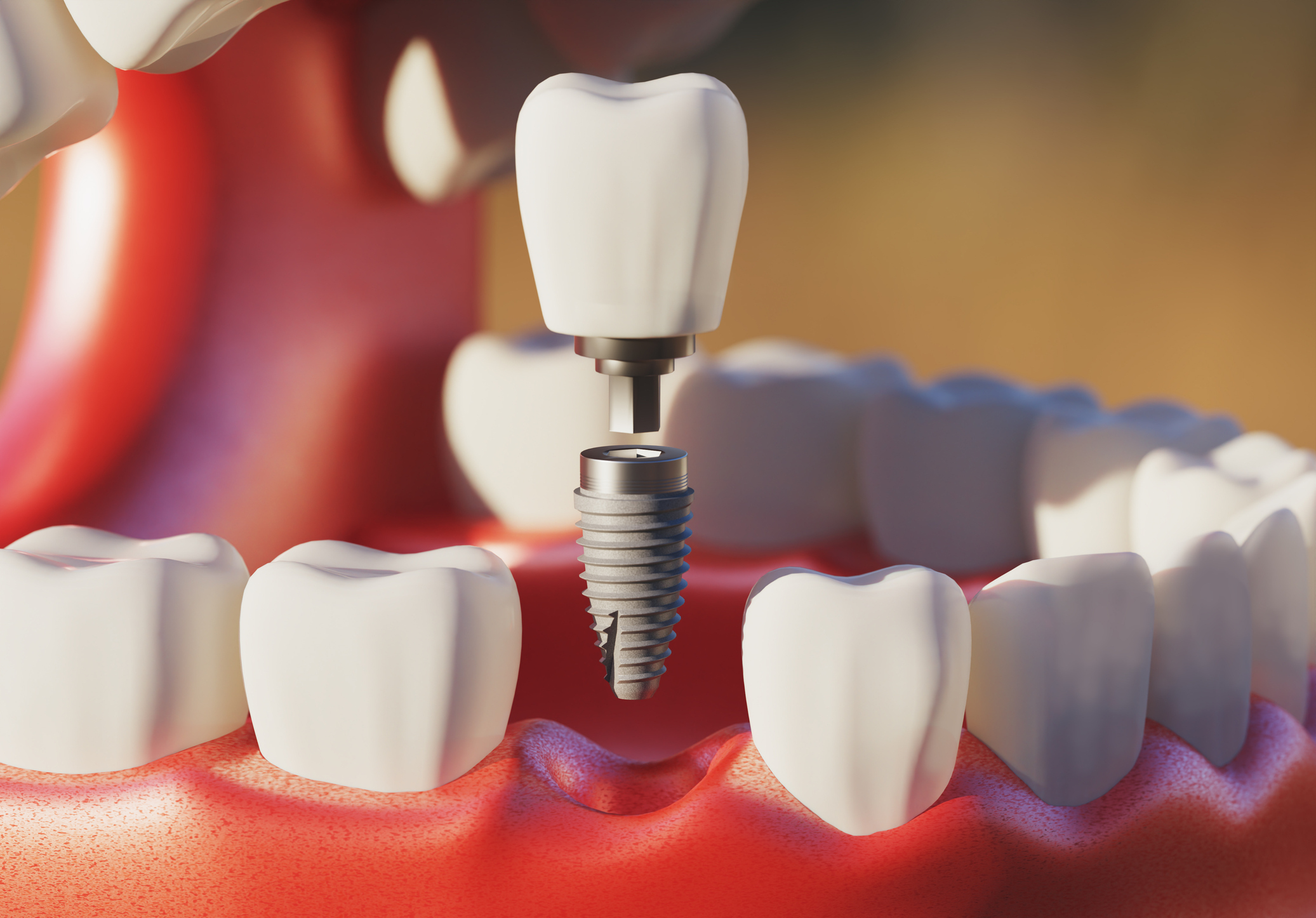 When it comes to oral function and aesthetics most of the attention is focused on healthy, strong teeth. Behind the average smile, however, is the often-overlooked jawbone which plays a vitally critical role. Much like a well-poured concrete slab creates the right foundation to build a house, a healthy jawbone is the structure that supports oral health. And like an old foundation, the bones in the mouth can develop problems over time. When this happens, your dentist or oral surgeon may recommend dental bone regeneration and grafting.
When it comes to oral function and aesthetics most of the attention is focused on healthy, strong teeth. Behind the average smile, however, is the often-overlooked jawbone which plays a vitally critical role. Much like a well-poured concrete slab creates the right foundation to build a house, a healthy jawbone is the structure that supports oral health. And like an old foundation, the bones in the mouth can develop problems over time. When this happens, your dentist or oral surgeon may recommend dental bone regeneration and grafting.
Causes of Loss of Jawbone
The jawbone’s central task is to hold your teeth together and maintain their position. Sometimes these bones around your teeth may deteriorate and get reabsorbed in the body because of certain oral problems. When this happens, your jaw can become weaker, and this can lead to tooth loss.
“Untreated dental conditions can have a negative impact on bone,” said Daniel W. Williams, Jr., DDS, Northwest Oral & Maxillofacial Surgery. “Periodontal disease and missing teeth are two main factors that cause the loss of jawbone.” Williams also says that sinus enlargements and tooth infections can also lead to bone loss.
Here is a closer look at the two main issues which could be weakening your jawbone:
- Periodontal disease: This inflammation affects the gingiva and the surrounding tissue in your mouth. Tartar is the primary cause of gum disease. If gum inflammation is left unchecked, it can cause periodontitis which can spread to surrounding tissue and start to erode the alveolar bone that holds the teeth in place. Over time periodontitis can cause bone loss and loosen teeth.
- Missing Teeth: The loss of teeth from trauma or dental extraction can cause the alveolar bone to immediately deteriorate. The body, recognizing that the tooth is no longer in place, starts to dissolve the bone in that location, re-contouring and reshaping the jawbone. Bone loss after a lost tooth can happen fast, resulting in 50+ percent loss in bone volume within six months.
Jawbone Regeneration
When you have bone loss you will need bone regeneration – also known as a bone graft – to maintain bone volume which is important, especially if you wish to use dental implants to replace missing teeth.
In fact, if you do not have a strong enough bone structure, dental implants may not be feasible since implants need to fuse with your jawbone to be successful. Bone regeneration is a procedure that uses your own bone, other human or animal bone or synthetic bone material to act as a filler, which then fuses with your existing bone and leads to the stimulation of new bone growth. Some liken the bone graft material to functioning as a scaffold to grow new bone. It can take several months for the graft to fuse with your normal bone. Implants can normally be put in place three to four months after a bone graft but in severe bone loss the wait could be as long as nine months. Guided bone regeneration membranes, with biologically active molecules, are typically used in dental bone regeneration and can improve the healing process because they cover the grafts and act like band-aids.
Three Types of Bone Grafts Done in the Jawbone to Prepare for Implant Placement
There are three types of bone grafting procedures:
- Sinus graft: The roots of some upper teeth extend up into the sinus cavity. When one of these teeth is extracted, the empty socket leaves a thin section of bone separating the mouth from the sinuses. A sinus graft is needed to thicken this wall of bone so it can support an implant.
- Ridge augmentation graft: The alveolar ridge is located around the teeth. When a tooth is extracted it will over time potentially lead to a concavity in the contour and a loss of vertical height in the ridge bone. Ridge augmentation grafting will rebuild that bone and provide an appropriate contour and height, allowing support for a dental implant.
- Socket graft: After a tooth has been extracted, a socket graft is performed to repair or protect the volume of socket that remains to facilitate placement of a dental implant.
Bone Regeneration Steps
Bone graft surgery is a routine procedure performed on an outpatient basis. In the case of an autograft, where the grating material will be from healthy bone from the patient (usually from the jaw or also hip or tibia) the procedure steps would be:
- An oral surgeon would first harvest your bone under anesthesia.
- Then an incision would be made in the gums in the area where regeneration is necessary.
- The bone grafting material would be inserted and covered by the membrane.
- A protective membrane would be put in place to help the graft grow.
- Then the gums will be closed with a few stitches.
Healing Process after Bone Regeneration
The healing process after dental bone regeneration can be broken into two phases. In the initial phase you can expect some soreness and swelling which can usually be taken care of by over-the-counter medicine and ice.
Your oral surgeon could prescribe, especially for the first week after surgery:
- Limited physical activity
- Diet of bland and soft food
- Antibiotics or painkillers, as needed
- Dress and care of graft site
Most patients feel normal after a few weeks and you should not feel any pain during the bone growth process in the coming months.
Adults of any age can be candidates for dental bone regeneration and grafting.
Contact Northwest Oral & Maxillofacial Surgery today to find out about how our board-certified surgeons can answer all your questions about dental bone regeneration and grafting.
References
https://www.cdc.gov/oralhealth/conditions/periodontal-disease.html
https://pubmed.ncbi.nlm.nih.gov/18713258/
https://www.texasoralsurgery.com/procedures/
https://www.texasoralsurgery.com/procedures/bone-grafting-2/






.png)
.png)
